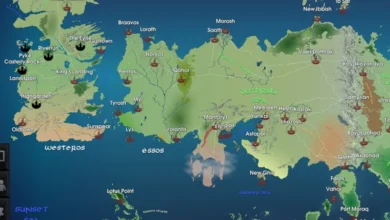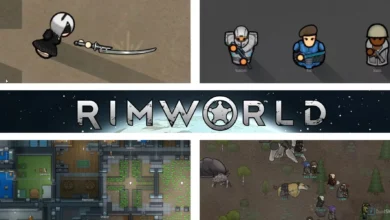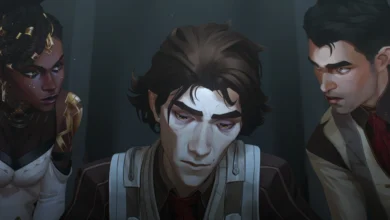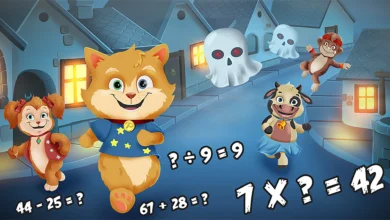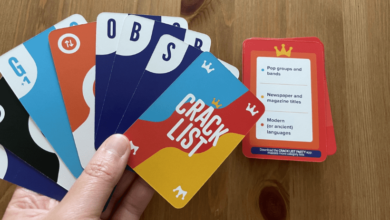Exploring Marvel Rivals Characters: The Greatest Conflicts in the Marvel Universe
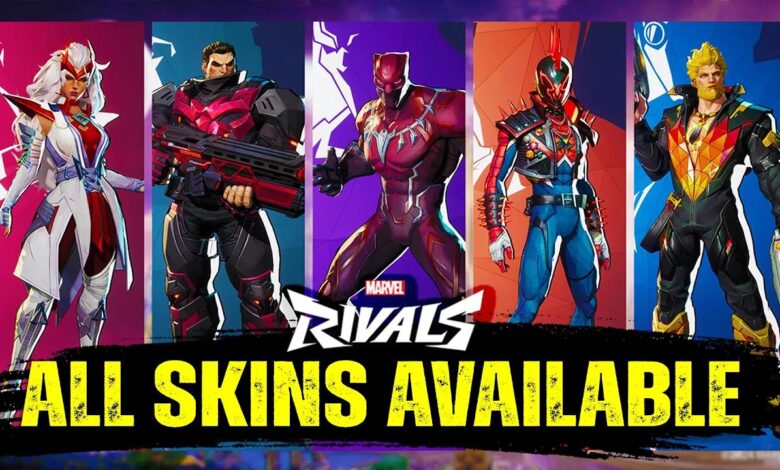
Introduction to Marvel Rivals Characters
The Marvel Rivals Characters Universe is well-known for its richly developed characters, many of whom are defined by their rivalries. These conflicts form the crux of engaging storytelling and compelling character arcs. Marvel rivals characters often find themselves in intense competitions for power, ideology, or personal vendettas, which reveal their strengths, weaknesses, and complexities. The various confrontations between these characters not only drive narrative momentum but also offer profound insights into their motivations and moral dilemmas.
Rivalries in this universe serve multiple purposes. Firstly, they establish contrasting ideologies, such as the classical good-versus-evil dynamic seen in the conflicts between heroes and villains. For instance, the iconic rivalry between Captain America and Iron Man delineates differing worldviews on governance and personal freedom. Such ideological disagreements allow audiences to engage with the characters on a deeper level, as they resonate with their respective causes and struggles.
Moreover, the evolution of relationships between Marvel rivals characters often results in significant character development. Antagonism can lead to growth; as characters are tested in the face of adversity, they may reveal hidden strengths and emotions. The rivalry between Spider-Man and Green Goblin serves as a prime example, where both characters learn from their encounters, ultimately shaping who they become. As they face each other, their personal battles intertwine with broader themes of responsibility, sacrifice, and redemption.
The intensity of these rivalries creates an intricate web of stories in the Marvel Universe, engaging fans while propelling characters into unforeseen challenges. As we explore iconic conflicts, it becomes evident that the essence of Marvel rivals characters lies not only in their individual stories but also in how these interactions reflect larger themes that resonate with audiences worldwide.
The Nature of Rivalries in Comics
Rivalries are an indispensable element in the fabric of comic book narratives, providing depth and engagement for both characters and readers. The interplay between heroes and villains often transcends mere conflict; it embodies emotional struggles, power dynamics, and philosophical disagreements, which resonate deeply with fans. One of the key factors that make a rivalry compelling is the emotional stakes involved. Characters often grapple with feelings of jealousy or inadequacy, whether stemming from unrequited admiration or a yearning for validation. These emotions not only humanize these characters but also create a connection with the audience, allowing readers to empathize with their struggles.
Moreover, power struggles serve as a significant backdrop for Marvel rivals. The confrontation of ideologies, particularly in the context of superheroes and their adversaries, drives many compelling storylines. These rivalries often depict contrasting moral values or objectives, illustrating the complexities of heroism. For instance, characters like Captain America and Iron Man symbolize differing philosophies regarding responsibility and freedom. Their conflicts are not merely physical battles; they are laden with philosophical debates that invite readers to consider their perspectives.
The narrative stakes within these rivalries also play a crucial role. High-stakes scenarios force characters into pivotal choices, testing their boundaries and beliefs. The nature of power and its consequences are articulated through the interactions of Marvel rivals, highlighting the choices they must make and the ramifications that emerge. Such narrative tension amplifies reader engagement and investment in the outcomes of these feuds.
In aligning personal conflicts with larger, universal themes, these rivalries contribute to the enduring appeal of Marvel’s characters, creating a tapestry of stories that captures the imagination. Through emotional intensity, ideological clashes, and high-stakes narratives, the rivalries within the Marvel Universe remain a vital aspect of what makes these characters and their stories captivating.
Iconic Marvel Rivalries: A Brief Overview
The Marvel Universe is rich with compelling narratives and multifaceted characters, many of whom share profound rivalries that define their stories. These conflicts often stem from differing ideologies, personal grudges, or even familial ties, creating a tapestry of tension that captivates audiences. Among the most notable rivalries are those between Iron Man and Captain America, Spider-Man and Venom, and Thor and Loki.
The clash between Iron Man (Tony Stark) and Captain America (Steve Rogers) stands out as one of the most significant rivalries within the Avengers. Their conflict escalated during the Civil War storyline, which saw Stark advocating for government oversight of superhero activities, while Rogers championed personal freedom. This ideological divide not only forged a rift between the two heroes but also pitted superhero against superhero, reflecting the complexities of authority and personal responsibility within the superhero community.
Another intriguing rivalry is that of Spider-Man (Peter Parker) and Venom (Eddie Brock). Initially, Venom was born out of Spider-Man’s black suit, embodying his darker impulses. This transformation marked the beginning of a tumultuous relationship, characterized by Venom’s obsession and vendetta against Spider-Man. The dynamic between the two showcases themes of obsession and duality, as Venom often reflects the darker aspects of Spider-Man’s own personality.
Finally, the rivalry between Thor and Loki is perhaps the most deeply rooted, arising from their complex brotherly relationship. As the God of Thunder, Thor embodies strength and honor, while Loki, the God of Mischief, often resorts to deception and trickery. Their conflicts are influenced by familial loyalty and betrayal, wrapping their rivalry in layers of depth that echo throughout their encounters. Each character’s quest for recognition and acceptance sheds light on their motivations, enriching the overall narrative of the Marvel Universe.
Iron Man and Captain America: A Clash of Ideologies
The rivalry between Iron Man and Captain America is one of the most compelling and enduring conflicts within the Marvel universe. At the heart of their disagreement lies a fundamental clash of ideologies regarding the balance between freedom and security. Iron Man, embodying a technocratic approach, believes that enhanced security measures are essential for the preservation of society. In contrast, Captain America stands firmly for individual liberties and the right to self-determination, prioritizing personal freedoms above all else.
This ideological discord began to take shape significantly during the events of the “Civil War” arc. Fueled by the aftermath of catastrophic events tied to superhero activities, Iron Man advocates for the Superhuman Registration Act, which calls for superheroes to disclose their identities and work under government oversight. Conversely, Captain America vehemently opposes this legislation, arguing that it undermines personal freedoms and can lead to governmental oppression. Their disagreement escalates from philosophical discussions to personal confrontations, marking a pivotal evolution in their relationship.
The implications of this rivalry extend beyond their interactions; it resonates throughout the Marvel universe, as other characters are drawn into their conflict. Various heroes take sides, leading to divisions that affect team dynamics and future alliances. This ideological battle crafted rich narratives, showcasing the complexities of heroism. The ensuing conflicts not only challenge the characters but also engage the audience in moral dilemmas about authority, accountability, and autonomy.
As we delve deeper into these rivalries, it becomes clear that Iron Man and Captain America’s relationship is much more than a simple good-versus-evil narrative. It highlights the dynamic tensions between differing philosophies in a world that requires heroes to navigate ethical and moral imperatives. Ultimately, this ongoing conflict has solidified their place among the greatest rivalries in the Marvel universe, showcasing the depth and intricacy of character development within this expansive fictional reality.
Spider-Man and Venom: The Dark Reflection
The rivalry between Spider-Man and Venom is one of the most compelling narratives in the Marvel Universe, marked by themes of obsession, revenge, and the moral complexities of heroism. Originally, Venom emerges as a manifestation of Spider-Man’s own struggles. The symbiote, bonding with journalist Eddie Brock, serves as an extension of Spider-Man’s psyche, amplifying his darker traits and becoming an antagonist that mirrors his own insecurities and faults. This connection not only intensifies their rivalry but also propels a deeper exploration of how power and responsibility can manifest in adversarial ways.
At the heart of this conflict lies the obsessive nature of Venom, who identifies Spider-Man as his existential adversary. Venom’s intense desire for revenge is fueled by a combination of personal loss and a desire to prove himself superior to the arachnid hero. As a creature born from the very essence of Spider-Man’s life—his black suit—Venom represents the darker aspects of heroism. The dichotomy between these two characters highlights the thin line between hero and villain, often blurring their identities as each clash brings forth questions of morality and ethics.
Moreover, their rivalry serves to amplify the psychological struggles within Spider-Man himself, unveiling his fears of becoming that which he fights against. The repeated confrontations with Venom force Spider-Man to reconcile with his own vulnerabilities, pushing him to confront the consequences of his powers and responsibilities. In essence, Venom does not merely oppose Spider-Man; he acts as an unsettling reflection of what Spider-Man could become under different circumstances. The evolution of this complex relationship enriches the narrative, showcasing the nuanced exploration of themes that resonate throughout the Marvel Rivals characters, illustrating how conflicts are often rooted in personal struggles and societal pressures.
Thor and Loki: The Ultimate Sibling Rivalry
The relationship between Thor and Loki has long been one of the most intriguing aspects of Marvel’s storytelling, representing a complex intertwining of sibling rivalry, betrayal, and the quest for redemption. As characters deeply rooted in Norse mythology and adapted for modern audiences, their dynamic reflects not only personal conflicts but also broader themes of family and identity. Throughout various storylines, Thor, the God of Thunder, and Loki, the God of Mischief, exemplify how their contrasting personalities create tension, with Thor embodying strength and honor, while Loki embraces cunning and deception.
This rivalry has been depicted in multiple formats, including comic books, animated series, and feature films, allowing for a rich exploration of their relationship. At the core of their conflicts is Loki’s constant desire to earn recognition and acceptance from Thor and the Asgardian realm. This longing often leads to acts of treachery against his brother and family, resulting in substantial betrayals that drive a wedge between them. Conversely, Thor’s unwavering loyalty and determination to protect those he loves can blind him to Loki’s darker motivations, creating a perpetual cycle of conflict.
Hulk vs. The World: A Rivalry of Survival
The character of the Hulk has long been one of the most compelling figures in the Marvel universe, embodying a struggle that resonates deeply with many fans. His ongoing rivalries with various antagonists, particularly General Ross and the Abomination, illustrate a profound narrative of survival, identity, and acceptance. Through these conflicts, the Hulk grapples not only with formidable foes but also with the complexities of his own existence. Hulk’s anger often serves as a catalyst for his powers, and this rage is not merely a response to external threats but a reflection of his internal battles.
General Ross, a key rival in Hulk’s saga, embodies governmental authority and societal fear surrounding the Hulk’s existence. Ross relentlessly pursues the Hulk, viewing him as a threat that must be contained. This antagonistic relationship highlights themes of acceptance and alienation. As Hulk fights against Ross’s efforts to capture or destroy him, he symbolizes the struggle of individuals who feel misunderstood and stigmatized by society. This ongoing rivalry probes the question of whether Bruce Banner, the man behind the Hulk, will ever be accepted or remain an outcast.
In addition to Ross, the Abomination presents a formidable challenge to the Hulk. With similar abilities but a contrasting moral compass, the Abomination underscores Hulk’s struggle with identity. As Hulk battles this rival, the reader is privy to a physical manifestation of Hulk’s inner demons—the fear that he may become like his foes, consumed by rage and bitterness. Each confrontation not only tests Hulk’s physical might but also forces him to confront who he is and who he wishes to become. The rivalries faced by Hulk echo throughout the Marvel universe, illustrating that the greatest conflicts are often fought within oneself as much as against external adversaries.
The Role of Rivals in Character Growth
Rivalries in the Marvel Universe serve as a critical catalyst for character development, as they facilitate profound interactions that challenge personal beliefs, instill moral questioning, and promote self-discovery. Through these tumultuous relationships, characters not only showcase their strengths and vulnerabilities but also often find themselves re-evaluating their goals and motivations. The dynamic tension between rivals presents an engaging narrative device that allows for exploration of deeper themes such as identity, morality, and redemption.
For instance, the rivalry between Iron Man and Captain America illustrates how conflict can lead to significant evolution in character arcs. Their ideological differences culminated in the “Civil War” storyline, ultimately forcing each character to confront his ideals and question whether the means justify the ends. Iron Man’s dependence on technology and governmental oversight stands in stark contrast to Captain America’s belief in individual freedom. This clash not only impacts their relationship but also spurs both characters into a journey of introspection and growth, leading to a more finely defined sense of self and purpose.
Similarly, the relationship between Spider-Man and his numerous foes, such as the Green Goblin, showcases how adversarial dynamics can compel a hero to evolve. Spider-Man’s ongoing conflicts with the Green Goblin highlight the sheer emotional stakes involved, pushing Peter Parker to make moral choices that ultimately shape his character. Through these encounters, he learns valuable lessons about responsibility, sacrifice, and the impact of his actions, further establishing him not only as a hero but as a relatable individual grappling with the complexity of life.
Moreover, rivalries can serve as mirrors, reflecting the intrinsic struggles faced by characters in the Marvel Universe. These rival interactions reveal their weaknesses, creating opportunities for character growth that can resonate on both personal and thematic levels. By examining distinct rivalries across the Marvel landscape, it becomes evident that the conflicts between marvel rivals characters are indispensable elements that greatly enhance their respective narratives and foster significant personal development.
Conclusion: The Enduring Appeal of Marvel Rivalries
The rivalries depicted among Marvel rivals characters are fundamental to the narrative architecture of the Marvel Universe. These conflicts not only provide an engaging storyline but also delve deep into the personalities and motivations of the characters involved. Iconic rivalries, such as that between Captain America and Iron Man, or the angst-driven confrontation between Spider-Man and Green Goblin, add layers of complexity to their respective arcs, inviting readers and viewers alike to explore themes of loyalty, ideology, and redemption.
Throughout the years, the evolution of these rivalries has significantly shaped the storytelling approach in both comics and films. The intricate dynamics among Marvel’s characters present authors and filmmakers with endless creative opportunities. This multi-faceted portrayal of conflict has become a hallmark of the Marvel narrative style, fostering connections with audiences that transcend age and cultural boundaries. The emotional investment in these rivalries often mirrors real-world conflicts, allowing fans to relate more deeply to the characters and their predicaments.
The appeal of Marvel rivals characters is bolstered by their compelling backstories and the moral complexities of their interactions. These rivalries create situations ripe for tension and drama, ultimately drawing in audiences who are eager to witness the outcomes of such legendary clashes. Furthermore, the contrast in values and methods among antagonists and protagonists enhances the narrative stakes, making the resolutions more impactful.
In conclusion, the enduring popularity of rivalries within the Marvel Universe showcases not just the power of conflict in storytelling, but also the intricate relationships between characters. As these iconic confrontations continue to evolve, they reinforce the timeless nature of these stories, ensuring that the appeal of Marvel rivals characters remains vibrant across generations. Whether through comics or cinematic portrayals, their conflicts resonate with audiences, encouraging ongoing engagement with the Marvel lore.
You May Also Read This Usaworldtoday.
